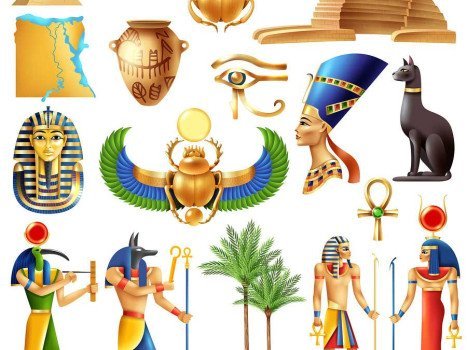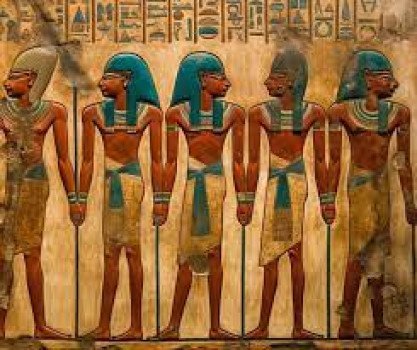Royal Mummies: The Journey of Egypt's Ancient Kings from Death to Immortality
What Was the Pre-Dynastic Era Like?
The pre-dynastic era in ancient Egypt is known mainly through its cemeteries. In the first half of the 4th millennium BCE the funerary practices were influenced by two early cultures: the Naqada culture in the south and the Buto culture in the north.
The northern culture didn’t bother with grave goods, the southern culture did. Vessels and pots were placed with the dead, to carry food for the afterlife, as they believed in another world where the dead’s needs were the same as in life.
What Did Ancient Egyptians Believe About the Afterlife?
The ancient Egyptians called the afterlife “Duat” or “Dat” meaning “the realm of the dead” or “the underworld”. Eternity was called “Jet”. Archaeological finds from the pre-dynastic era show items to do with the deceased’s status: ivory or bone combs and spoons and necklaces.
Some were given funerary ceremonies, as shown by the body and the offerings, some weren’t. The differences in burial practices show the diversity and complexity of the funerary rituals in the southern culture.
How Did Egyptians View Death?
The Egyptians saw death as part of the cosmic order, death was not extinction but a state of being of the dead. Egyptian texts describe death as a convalescence after an illness, as if the person was in another life where he was free from the troubles of this life and was recovering.
Pharaohs were seen as merging with the creator god. An invocation from the Pyramid Texts says: “This king was born when the sky was not yet born, when the earth was not yet born, when humans were not yet born … when death itself was not yet born.”
What Were the “Houses of Eternity”?
To be resurrected and immortal you had to prepare a secure tomb called “House of Eternity” or “House of Eternity”. These tombs were made of mudbrick or stone, had a burial chamber and additional rooms or temples for rituals, to separate the living from the dead.
Large mudbrick tombs were built in Abydos and Saqqara cemeteries in the 4th millennium BCE. From the 3rd millennium BCE the pyramids began to be built, culminating in the tombs of the Valley of the Kings and the temples of the New Kingdom.
What Was the Mummification Process?
Natural mummies were found in Egypt dry earth and soil so the Egyptians thought about preserving the body so the parts of a person could return to it, as part of their resurrection beliefs.
The Egyptians started experimenting with mummification at the end of the Thinite Period (First and Second Dynasties) or the beginning of the Third Dynasty. The process evolved over time and reached its peak during the New Kingdom.
No ancient texts describe the process of mummification but studies of human and animal mummies suggest it involved removing the brain and internal organs (except the heart) drying the body washing and wrapping it in resin-soaked linen.
What Was the "Opening of the Mouth" Ritual?
Funeral ceremonies were divided into three stages: mourning around the funeral bed the procession to the Nile’s shore and crossing the river to the cemetery. Upon reaching the cemetery the priests would perform rituals, most notably the "Opening of the Mouth" which was to revive the deceased senses and bring life back.
The priest would touch the mummy’s face and mouth with a special tool and say “Now you see with your eyes, hear with your ears, open your mouth to speak and eat, move your arms and legs. You live again; you are now alive and have become young again. You will live forever.”
What Were Funerary Texts?
Reading religious and funerary texts was essential to revive the soul and preserve the mummy. These texts were read after death, during purification, mummification and burial and when presenting offerings and placing grave goods in the tomb.
The Pyramid Texts are the oldest known collection of funerary texts, to secure the king’s fate after death through the power of prayers and incantations. These texts were inscribed on the walls of royal burial chambers from the reign of King Unas (or Unis) the last king of the Fifth Dynasty and continued until the early First Intermediate Period.
 English
English
 Español
Español
 Chinese
Chinese
 français
français
 português
português
 Italian
Italian
 Russian
Russian
 Czech
Czech
 Deutsch
Deutsch
 Japanese
Japanese
-webp.jpg)








